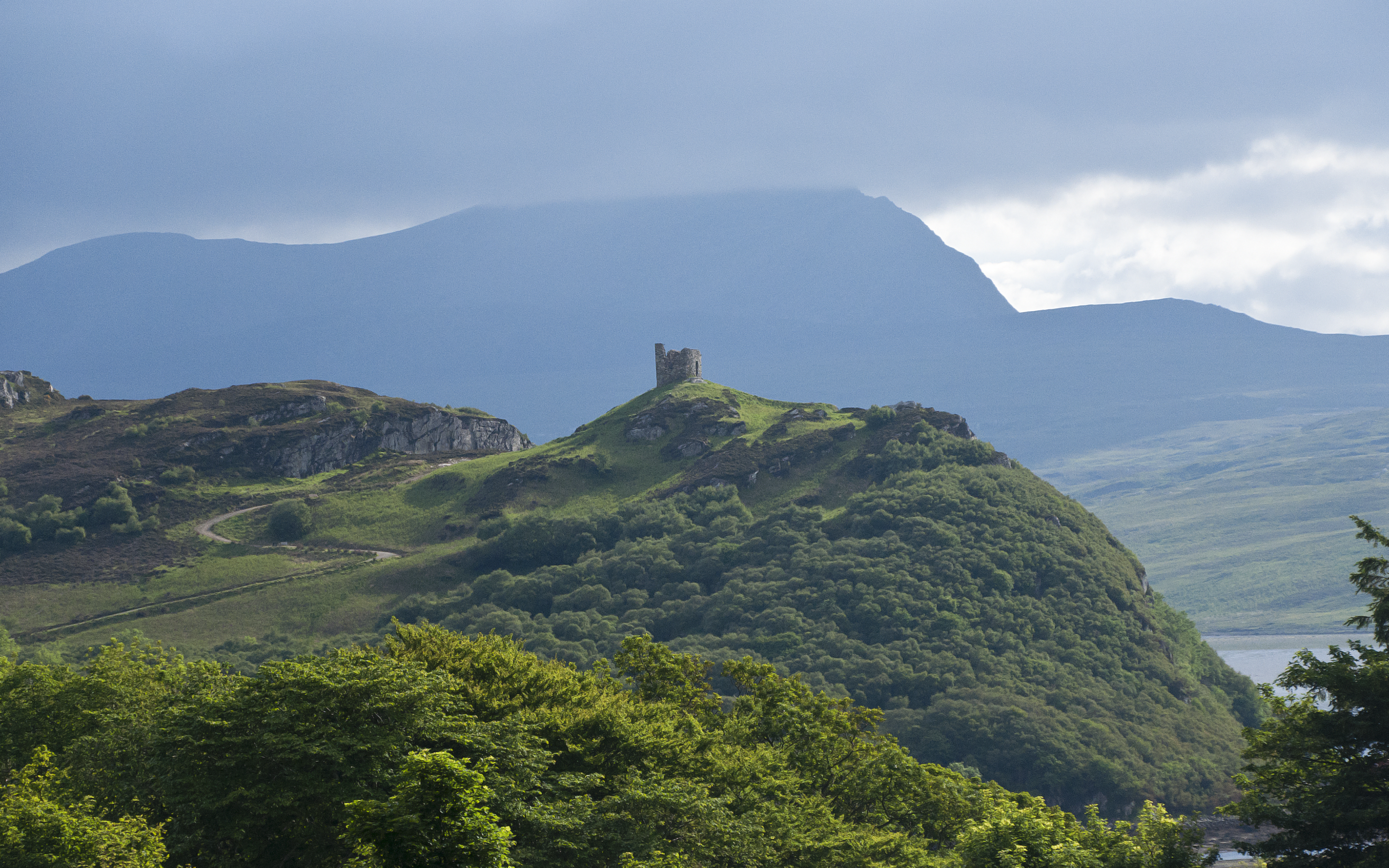Castle Varrich on:
[Wikipedia]
[Google]
[Amazon]

 Castle Varrich ( gd, Caisteal Bharraich) is a castle in the far north of the
Castle Varrich ( gd, Caisteal Bharraich) is a castle in the far north of the
{{Coord, 58, 28, 32.72, N, 4, 26, 7.58, W, region:GB, display=title Castles in Highland (council area), Castle Varrich, Varrich Scheduled Ancient Monuments in Highland Buildings and structures in Sutherland

 Castle Varrich ( gd, Caisteal Bharraich) is a castle in the far north of the
Castle Varrich ( gd, Caisteal Bharraich) is a castle in the far north of the Scottish Highlands
The Highlands ( sco, the Hielands; gd, a’ Ghàidhealtachd , 'the place of the Gaels') is a historical region of Scotland. Culturally, the Highlands and the Lowlands diverged from the Late Middle Ages into the modern period, when Lowland Sco ...
, near the village of Tongue
The tongue is a muscular organ (anatomy), organ in the mouth of a typical tetrapod. It manipulates food for mastication and swallowing as part of the digestive system, digestive process, and is the primary organ of taste. The tongue's upper surfa ...
. The castle is on a local high point of rock, overlooking both the Kyle of Tongue
The Kyle of Tongue ( gd, Caol Thunga) is a shallow sea loch in northwest Highland, Scotland, in the western part of Sutherland. Featuring a rocky coastline, its mouth is formed at Tongue Bay. The community of Tongue is situated on the Kyle's easte ...
and the village of Tongue. The castle's precise origins and age are unknown.
The ancient seat of the chief of the Clan Mackay
Clan Mackay ( ; gd, Clann Mhic Aoidh ) is an ancient and once-powerful Scottish Highlands, Highland Scottish clan from the far North of the Scottish Highlands, but with roots in the old Mormaer of Moray, Kingdom of Moray. They supported Robert I ...
was at Castle Varrich, thought to be over one thousand years old; there are believed to be caves under the castle which were once inhabited by the Mackays. It is believed that the Mackays may have built their castle on the site in the 14th century, on top of an existing old Norse fort.
The walls are generally thick, or thicker, and have been built from roughly squared blocks of metamorphosed sandstone rock of varying thickness, laid in rough courses of random depth. The stones seem to have been laid without the use of mortar, and have suffered little from weathering, considering that the building may be 1000 years old, and considering the local weather. From places where parts of the walls have fallen away it appears that the construction seen on the wall faces is consistent throughout their thickness; as distinct from the type of walling where the faces have been constructed in a tidy fashion, but between them is a core of rubble.
The castle had two floors plus an attic. The ground floor may have been used as stables; it was entered through an existing door on the north wall. There were no stairs between the two floors, suggesting that the ground floor was for horses or cattle. The upper floor entrance was on the south side and would most likely have been accessed by a ladder or removable stair. There was a window in the east wall and a fireplace in the west, but both have now collapsed past recognition. Later the clan chief's seat moved to Tongue House. There is a marked footpath from Tongue to Varrich Castle.
Varrich Castle has views of mountains Ben Loyal
Ben Loyal (). is an isolated mountain of 764 m in Sutherland, the northwestern tip of the Scottish Highlands. It is a Corbett located south of the Kyle of Tongue and offers good views of the Kyle, Loch Loyal to the east, and Ben Hope to the ...
and Ben Hope
Ben Hope ( gd, Beinn Hòb) is a mountain in northern Scotland. It is the most northerly Munro, standing alone in the Flow Country (a region of bumpy, peat-covered moorland) south-east of Loch Hope in Sutherland. The mountain is a roughly trian ...
.
The castle was updated in 2017 to make it more accessible with a galvanised steel spiral staircase and viewing platform inside allowing visitors a higher viewpoint over the Kyle of Tongue
The Kyle of Tongue ( gd, Caol Thunga) is a shallow sea loch in northwest Highland, Scotland, in the western part of Sutherland. Featuring a rocky coastline, its mouth is formed at Tongue Bay. The community of Tongue is situated on the Kyle's easte ...
.
References
External links
* Photos of Castle Varrich on Flickr{{Coord, 58, 28, 32.72, N, 4, 26, 7.58, W, region:GB, display=title Castles in Highland (council area), Castle Varrich, Varrich Scheduled Ancient Monuments in Highland Buildings and structures in Sutherland